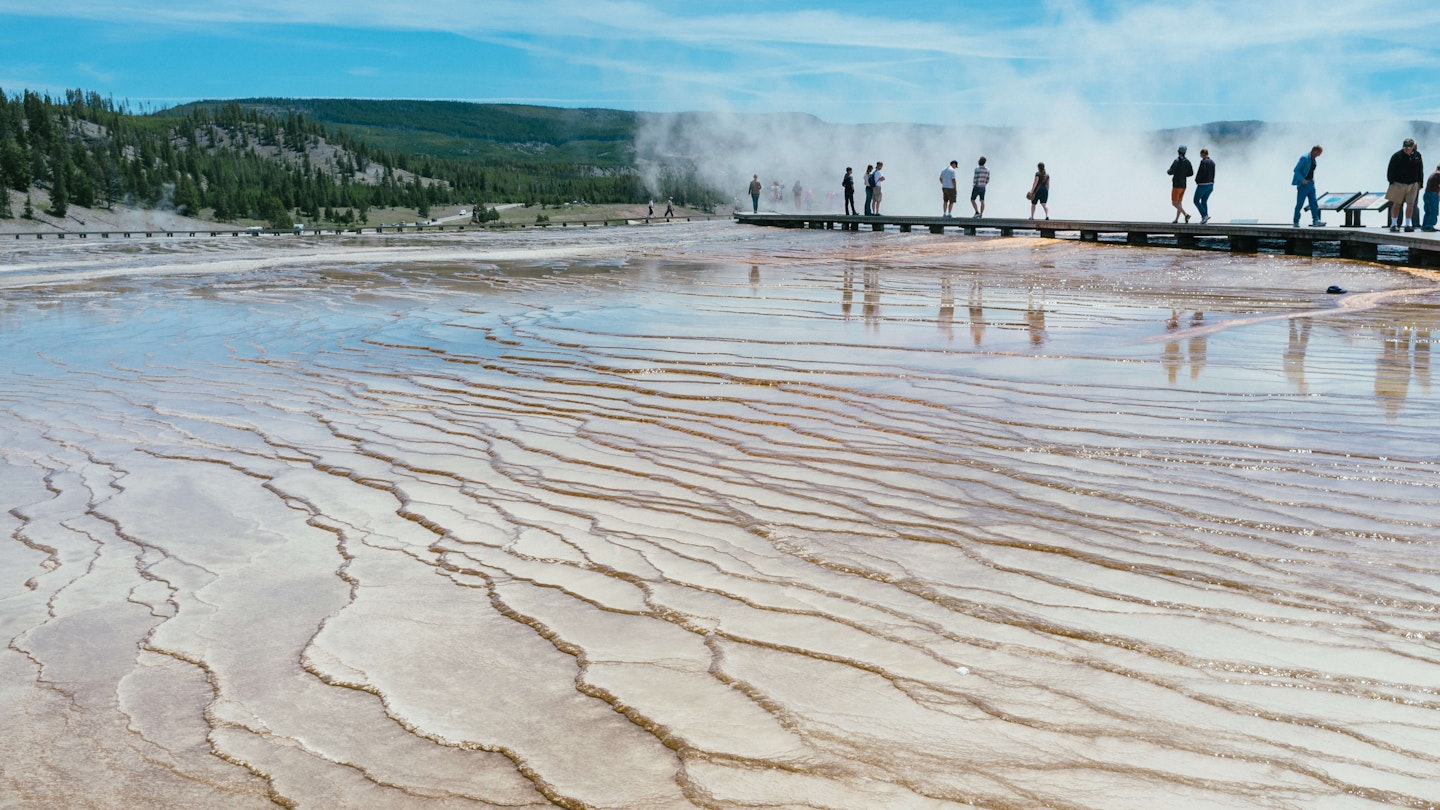Essential Tips for Visiting Yellowstone National Park
After 15 years living in Yellowstone County, Montana, and authoring four editions of Lonely Planet’s guide to Yellowstone & Grand Teton National Parks, I’ve learned a trick or two about visiting this incredible park.
From avoiding the summer crowds to staying safe in grizzly country, here’s what I wish I had known on my first visit to Yellowstone National Park.
1. Visit in Shoulder Season
More than 4 million people visit Yellowstone National Park every year, with almost 70% arriving in the summer months of June, July, and August. Campgrounds, trailheads, restaurants, and roads can become incredibly crowded.
If your vacation dates allow, consider visiting at the very beginning or end of the summer. September offers fabulous weather and lower crowds, especially after Labor Day, and this continues until mid-October. May is also a great time to visit, particularly in the northern half of the park and at lower elevations, although high passes and some roads may still be snow-covered.
Additionally, the northern section of the park is accessible year-round via the Mammoth to Cooke City road, so you can explore it anytime you wish.
2. Plan Accommodation Well in Advance
During the peak months of July and August, it is vital to arrange accommodation months ahead, including campsites. Since 2022, all of Yellowstone’s campgrounds are reservable, whether through National Park Service (NPS) sites or other park lodgings. NPS-run sites take bookings six months in advance, while other park facilities may accept them up to 13 months prior.
A few NPS campsites are released just two weeks in advance, providing some options for last-minute trips, although flexibility is required. Indian Creek campsite, for instance, typically fills last. Without prior reservations, camping outside the park will extend your daily driving time.
Due to flooding in June 2022, some campgrounds were closed throughout the season, so verify current opening dates with the park service.
For hotels inside the park, it’s best to book up to a year ahead. The reception desk at any of the park’s accommodations can inform you of last-minute room cancellations.
3. Check Road Openings
If visiting in April or May, be sure to check the road opening schedule on the NPS website. Roads and accommodations in the southern half of the park open on a staggered schedule, concluding with the road between Tower and Canyon junctions by Memorial Day. Some campgrounds do not open until early June. Traveling on recently opened park roads allows you to largely enjoy that section of the park to yourself.
Remember to check online for road construction updates as well, to plan for potential traffic delays.
4. Keep Your Distance!
Yellowstone is an elemental, untamed place that demands respect. Visitors have faced fatalities due to attacks from grizzly bears or falling into boiling hot springs.
Your natural instinct for self-preservation should keep you 100 yards away from bears and wolves, while staying at least 25 yards away from bison, elk, and moose, especially if young are nearby. Bison injure more park visitors than any other animal!
5. Carry Bear Spray
For those venturing into Yellowstone’s wild backcountry, investing in a can of bear spray is crucial. Outdoor stores in regional towns and inside the park sell bear spray, and rentals are available as well. Proper usage knowledge is vital for safety, as bear spray is meant to deter an advancing bear, not serve as insect repellent.
6. Practice Your Western Pronunciation
To blend in with the locals, familiarize yourself with Montana/Wyoming pronunciation. For example, creek is pronounced crick and coyote as KAI-ote. Additionally, Slough Creek is correctly pronounced Slew Creek. It’s also essential to recognize that those are bison, not buffalo, grazing the Lamar Valley.
7. Be Prepared for Limited Cell Phone Reception
Yellowstone has limited cell phone service mainly around the junction hubs of Mammoth, Canyon, Grant Village, Old Faithful, and Lake Village. Wi-Fi is even more patchy, with free access only available at Mammoth’s Albright Visitor Center. If connectivity is essential, you will need to drive to nearby gateway towns like Gardiner and West Yellowstone.
8. See Popular Sights from a Different Perspective
Many of Yellowstone’s most dramatic sights attract crowds, but you can often find a private viewpoint with some effort. For example, Calcite Springs Overlook in the Tower-Roosevelt area can be accessed via a short hike from the Yellowstone River Picnic Area, providing stunning views without the crowd.
Similarly, while Grand Prismatic Spring draws many visitors to busy boardwalks in Midway Geyser Basin, walking 0.6 miles south from the Fairy Falls trailhead offers a much better view over the pool’s colorful rings.
9. Utilize Park Intel to Maximize Your Time
Visitor information centers can provide crucial details for your trip. For example, the Old Faithful visitor center lists predicted eruption times of geysers, allowing you to plan accordingly to witness as many as possible. Moreover, Mammoth’s Albright Visitor Center details locations of recent wildlife sightings, particularly useful for spotting bears or wolf packs.
10. Expand Your Knowledge About the Park
The more you learn about Yellowstone’s geology and wildlife, the more astonishing your experience becomes. The park’s most popular hike leads to Mt Washburn, offering epic views, but understanding you are standing on the lip of a supervolcano caldera heightens its significance. Each visit will inspire a greater desire to return.




